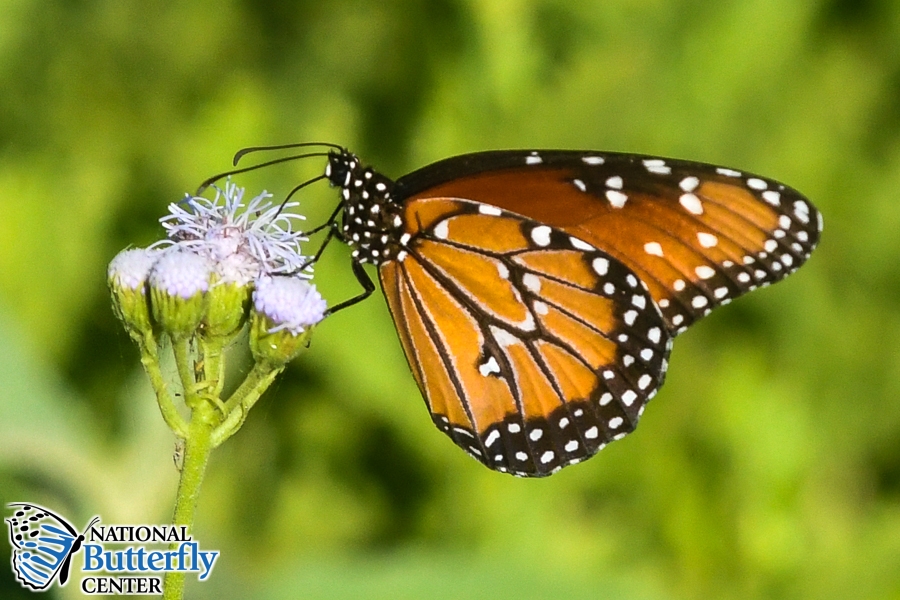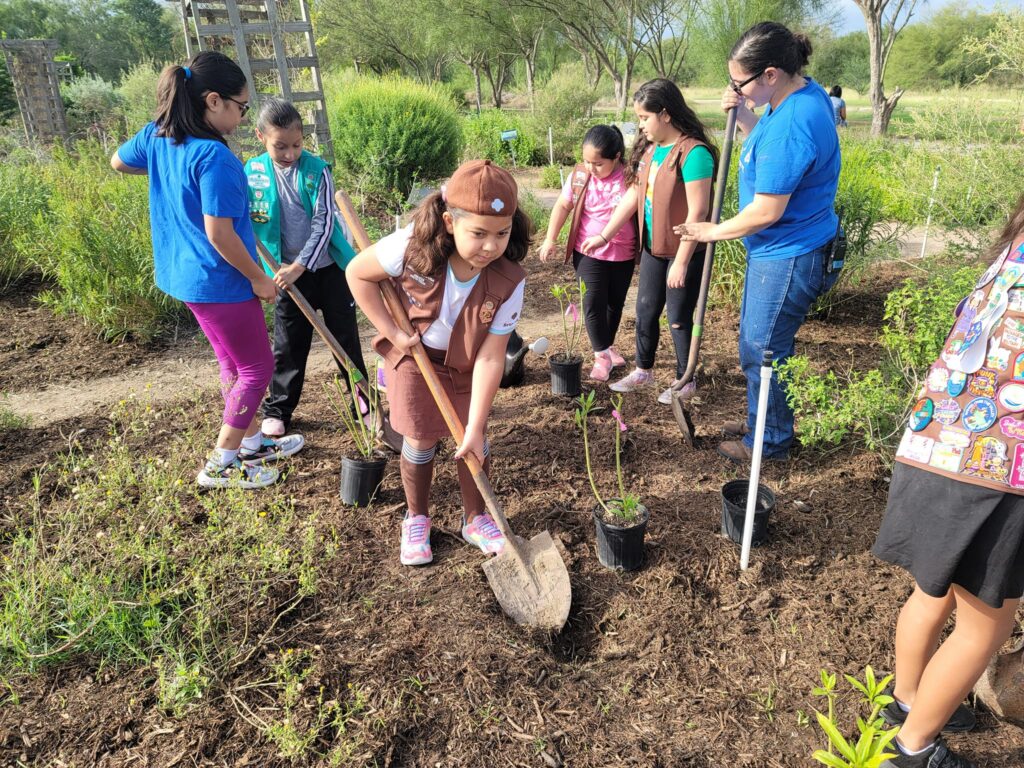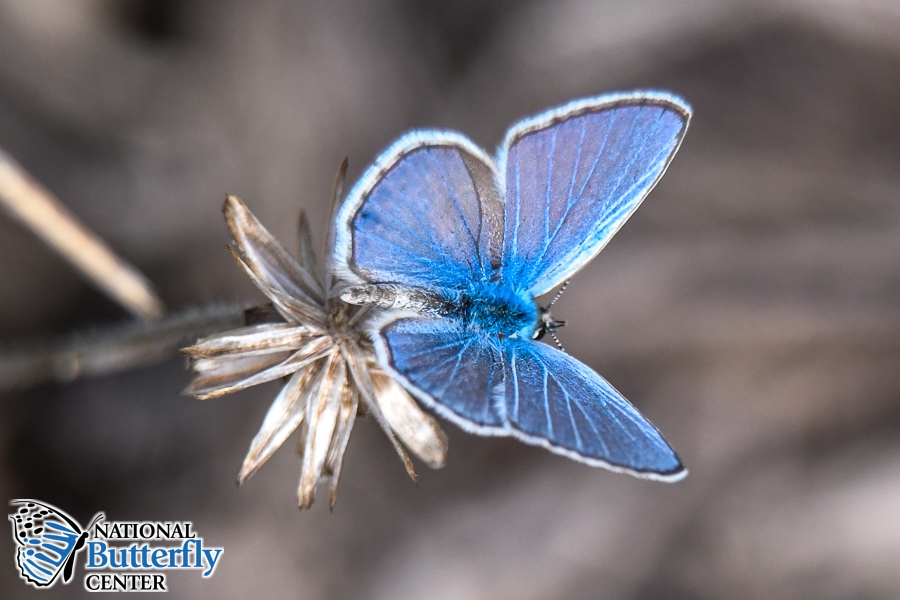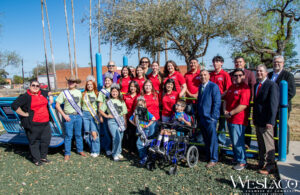- La Feria Community Holds Succesful Business Mixer Event
- Little Nashville to Take Place in Downtown Mercedes
- Lions Basketball Captures District Gold
- La Feria ISD Students Compete in Regional Chess Tournament
- Lions End First Half of 32-4A on a High Note
- La Feria ISD Held Another Successful Parent Conference
- Strong Appearance for Lions at Hidalgo Power Meet
- LFECHS Students Get to Meet Local Actress
- Students Participate in Marine Biology Camp
- Two LFECHS Students Qualify for All-State Band
National Butterfly Center is Home to Hundreds of Species
- Updated: January 12, 2024

By Mike Villarreal
Ten years ago, the North American Butterfly Association (NABA) broke ground for what has now become home to the largest native plant botanical garden in the United States. Here in the Rio Grande Valley the National Butterfly Center (NBC) is a project of the NABA and is a 100-acre preserve that is home to the greatest volume and variety of wild, free-flying butterflies in the nation. In fact, USA Today calls the National Butterfly Center in Mission, Texas “the butterfly capital of the USA”.
The Center showcases live animals and plants in wild and cultivated settings with educational exhibits to enhance human understanding and appreciation. Did you know that nearly 150 species of North American butterflies can be seen only in the Lower Rio Grande Valley or by traveling into Mexico.
More than 300 species of butterflies may be found in the LRGV, and more than 200 species have been seen at the National Butterfly Center including several rarities and U.S. records. And incredibly almost 40 percent of the 200 plus butterflies that can be found in the U.S. can be seen in the southernmost tip of Texas, where the subtropical climate makes it possible to enjoy the outdoors year-round.
The National Butterfly Center is also home to a giant African Spurred Tortoise named Spike. He’s been a resident of the garden and just recently celebrated his 11th year on the anniversary of his adoption. Spike has become a large part of the youth education and wildlife conservation program. “We call Spike the world’s most spectacular non-butterfly,” states Mariana Trevino Wright who is the executive director of the center.
Of course, butterflies aren’t the only thing in the center. If you are also a bird watcher, you could also find a variety of species of birds native to the area. If you want to support a good cause, go and visit the National Butterfly Center which is located at 3333 Butterfly Park Dr. in Mission. For more information, you could also visit their website at nationalbutterflycenter.org or their Facebook page at facebook.com/natbutterflies.

Hace diez años, la Asociación Norteamericana de Mariposas (NABA) inició la construcción de lo que ahora se ha convertido en el hogar del jardín botánico de plantas nativas más grande de los Estados Unidos. Aquí en el Valle del Río Grande, el Centro Nacional de Mariposas (NBC) es un proyecto de la NABA y es una reserva de 100 acres que alberga el mayor volumen y variedad de mariposas silvestres que vuelan libremente en la nación. De hecho, USA Today llama al Centro Nacional de Mariposas en Mission, Texas, “la capital de las mariposas de Estados Unidos”.
El Centro exhibe animales y plantas vivos en entornos silvestres y cultivados con exhibiciones educativas para mejorar la comprensión y el aprecio humanos. ¿Y sabía que casi 150 especies de mariposas norteamericanas se pueden ver sólo en el Valle Inferior del Río Grande o viajando a México?
De hecho, se pueden encontrar más de 300 especies de mariposas en el LRGV, y se han visto más de 200 especies en el Centro Nacional de Mariposas, incluidas varias rarezas y registros de EE. UU. E increíblemente, casi el 40 por ciento de las más de 200 mariposas que se pueden encontrar en los EE. UU. se pueden ver en el extremo sur de Texas, donde el clima subtropical permite disfrutar del aire libre durante todo el año.
El Centro Nacional de Mariposas también alberga una tortuga gigante africana con espuelas llamada Spike. Ha sido residente del jardín y recientemente celebró su undécimo año en el aniversario de su adopción. Spike se ha convertido en una parte importante del programa de educación juvenil y conservación de la vida silvestre. “Llamamos a Spike la no mariposa más espectacular del mundo”, afirma Mariana Treviño Wright, directora ejecutiva del centro.
Por supuesto, las mariposas no son lo único que hay en el centro. Si además eres observador de aves, también podrás encontrar una variedad de especies de aves nativas de la zona. Si desea apoyar una buena causa, visite el Centro Nacional de Mariposas, ubicado en 3333 Butterfly Park Dr. en Mission. Para obtener más información, también puede visitar su sitio web en nationalbutterflycenter.org o su página de Facebook en facebook.com/natbutterflies.
Information and photos from the National Butterfly Center Facebook page.





